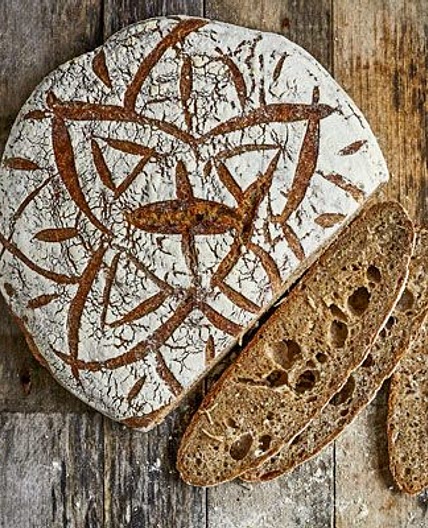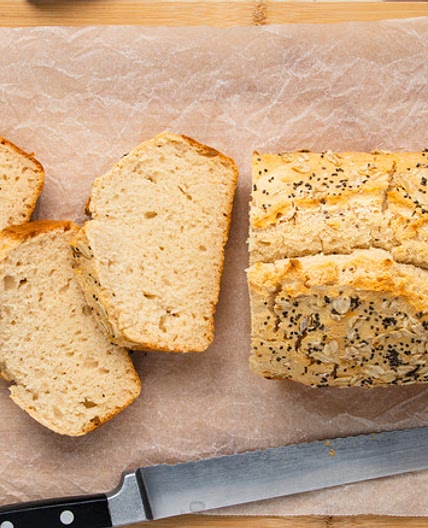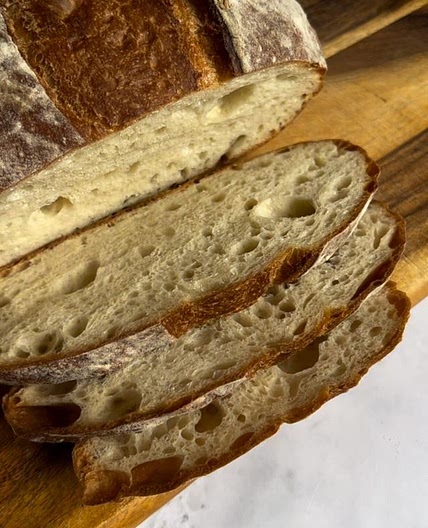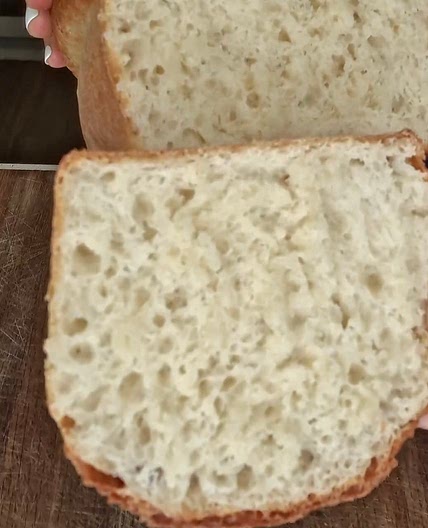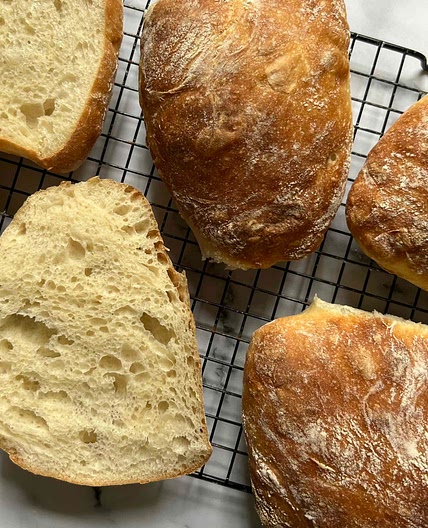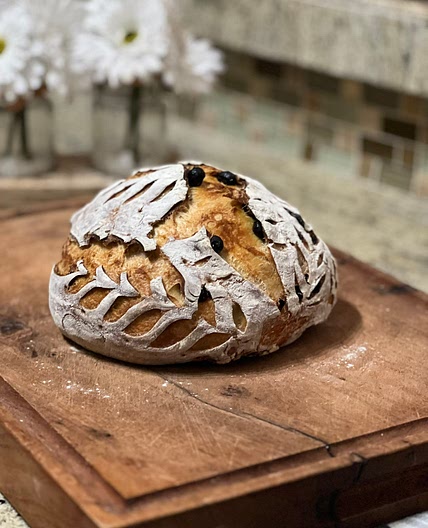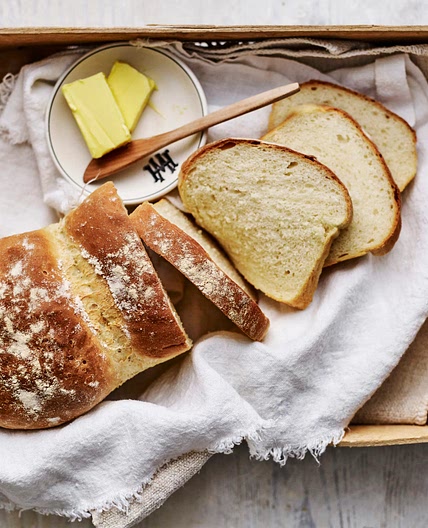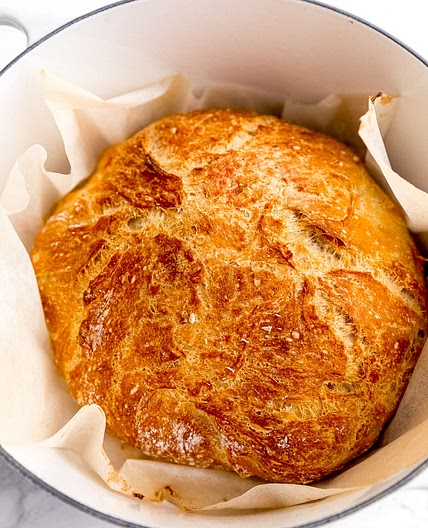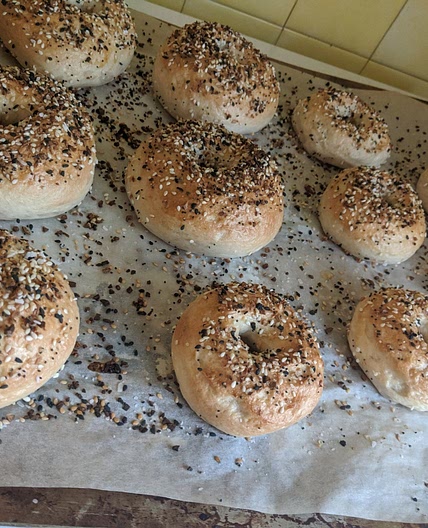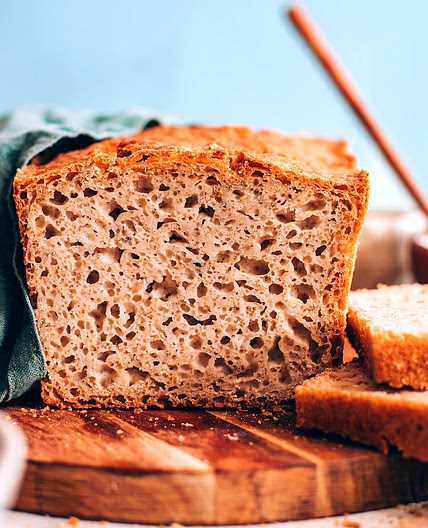
1/3

2/3

3/3
100%
1
By Lacey (Lace Bakes)
Honey Whole Wheat Bread
20 steps
Prep:2h 30minCook:40min
This nutty and wholesome loaf of bread is slightly sweet due to the addition of honey into the dough. This is the perfect bread for sandwiches or simply toasted with plenty of salted butter, a drizzle of honey and a sprinkle of flaky sea salt. Be sure to check out my 'pecan pie butter' recipe as well...it pairs perfectly with this bread!
Updated at: Tue, 29 Oct 2024 15:45:36 GMT
Nutrition balance score
Good
Glycemic Index
68
Moderate
Glycemic Load
23
High
Nutrition per serving
Calories166.4 kcal (8%)
Total Fat2 g (3%)
Carbs34.1 g (13%)
Sugars3.7 g (4%)
Protein4.4 g (9%)
Sodium329 mg (16%)
Fiber3.7 g (13%)
% Daily Values based on a 2,000 calorie diet
Ingredients
12 servings
Instructions
Mixing the dough
Step 1
In a large mixing bowl, whisk together the warm water, honey, yeast and extra virgin olive oil. Tip in the whole wheat and white bread flour and sprinkle over the sea salt. Stir with a spoon until all the flour has been absorbed. Look at my video tutorial on Instagram or TikTok and use that as a gauge for how your dough should look and feel free to adjust with a little more flour or a little more water. If you’re using brown sugar instead of honey, you may need a little more water than the recipe calls for.
Step 2
Scrape down the sides of the bowl with a dough scraper, cover with a tea towel and leave the dough to rest at room temperature for 15 minutes.
Stretch + folds and proofing the dough
Step 3
After 15 minutes, you will perform a series of stretch + folds. This helps to develop the gluten in the dough which will help with the structure of the bread. Wet your hand (this prevents dough from sticking to you), grab a handful of dough from the 12 o’clock position, pull it up slightly and then pull it all the way up and over the bulk of the dough to the 6 o’clock position. Repeat this action on all sides of the dough until it feels like the dough has tightened up and you can no longer stretch the dough up and over itself anymore.
Step 4
Cover the bowl with a tea towel and leave the dough to rest at room temperature for 15 minutes and then repeat the stretch + folds again. Note that if you’re used to working with white flour, the whole wheat flour won’t be as stretchy and elastic due to less gluten and more bran in the flour. The second set of stretch + folds should be a little easier than the first set!
Step 5
Cover the bowl with a tea towel and leave the dough to rest at room temperature for 1.5 hours.
Shaping the dough + pre-heating dutch oven/cast iron pot
Step 6
Once the dough has finished proofing in the bowl, place the Dutch oven or cast iron pot into the oven and preheat to 255C/490F (non fan/non convection). If your oven doesn’t go this hot, just put it on the highest setting and expect to add some additional minutes of bake time at the end.
Step 7
Now it’s time to shape the loaf. The dough will be very sticky and wet - flour is your friend here. Liberally flour your work surface and tip the dough from the bowl onto the flour. Flour your fingers and with both hands, grab the top (12 o’clock) quarter of the bread and pull it over about 2/3 of the way towards the bottom (6 o’clock). With both hands, grab the bottom quarter (6 o’clock) and pull it up and over the portion of dough you just pulled down. Repeat this pulling over motion with the right hand side (3 o’clock) and the left hand side (9 o’clock). The dough should have tightened up into a more ball-like shape. Remember you can flour your fingers between each pulling motion to help prevent sticking.
Step 8
Flip the ball upside down, ensuring there isn’t too much flour on the work surface beneath it. The smooth side of the dough should now be on the top. Dust a little bit of flour over the top of the bread and then cup your hands around the dough and slowly start pulling it around in a slow, circular shape. You’ll notice that with this gentle coaxing around in a circular motion, the ball of dough will tighten up and start to look smoother around the edges. Repeat this motion until the dough ball feels slightly taut. This shaping step is important for creating tension in the dough. More tension in the dough ensures a better rise or ‘oven spring’ as breadfolk call it.
Step 9
Once the dough has been shaped, measure out a piece of nonstick parchment paper big enough for the dough to sit in the middle with about 3 inches of extra space on at least two sides of it. The extra space (or ‘handles’) on the parchment paper is important because you need to have something to hold onto while lowering the bread into the hot pot.
Step 10
Place the shaped dough onto the middle of the parchment paper, and then flip the mixing bowl over the top of dough to cover it while it proofs for 30 minutes. The pot in the oven will continue preheating while the dough proofs under the bowl.
Step 11
After 30 minutes, it’s time to remove the mixing bowl and score the bread for baking. This is quite a wet dough, and while you can try to use a bread lame (a razor with a fancy wooden holder) for this step, I find that using a sharp serrated knife really does a good job here. No fancy equipment needed!
Step 12
With a quick and decisive swipe, make a cut in the dough from the top to bottom. If you’d like, you can make another score in the opposite direction from left to right, but one score will be enough. Scoring the dough will encourage the dough to expand in a more controlled way. Without scoring, the bread will naturally expand and burst in sporadic places, but it could potentially rise a bit less than it would with a controlled score.
Baking
Step 13
It’s now time to transfer the dough into the Dutch Oven or cast iron pot. Using heavy duty oven gloves, remove the pot from the oven and place it on to your stovetop/hob, then remove the lid from the pot and set it to the side. Carefully lift up the sides of the parchment paper and lower the bread into the pot. Be very careful not to burn your hands while making this transfer. Place the lid back on and return the pot back to the oven (place on the middle rack). Set a timer for 40 minutes.
Step 14
After 38-40 minutes, remove the lid to check on the colour of the bread. It will be a deep golden brown colour when it has finished baking and it should sound hollow when you tap the bottom of it. Replace the lid if you think the bread needs a few more minutes baking. My oven typically takes 40 minutes, but it could take a few minutes less or up to ten minutes longer depending on the strength of your oven - sometimes the temperature gauges are a bit off! You can always remove the lid for those last few minutes so it can crisp up a bit quicker from the direct heat of the oven.
Step 15
Once the bread has finished baking, remove the pot from the oven using heavy duty oven gloves and then transfer the bread to a cooling rack. It’s best to wait at least 30 minutes to cut into your bread. Enjoy!
Storing and freezing
Step 16
You should expect that the crust of the bread will naturally soften a bit over time. Because of the water and sugar content in the dough recipe, the interior of this loaf should remain moist and soft for at least 2-3 days. You can store it in a linen bread bag, wrap it in a large beeswax wrap or store it in a large 6L plastic zip top bag (the crust will soften a bit more with this option).
Step 17
This makes quite a large loaf, so I will often slice half of the bread and freeze the slices in a large plastic zip top freezer bag. This way I have lovely homemade slices of bread that can be toasted from frozen on demand.
Step 18
You can also freeze the entire loaf of bread. Wait for it to cool completely and then wrap it well in aluminium foil. Then wrap the loaf in plastic wrap or slide it into a large 6L freezer bag and place it into the freezer. When you’d like to reheat it, remove it from the plastic wrap/bag but leave the foil on it. Place the foil-wrapped bread into a 175C/350F oven for 20-30 minutes. Remove the foil and let the crust crisp up for an additional 3-5 minutes. The bread should be as good as new!
What if I don't have a Dutch Oven or cast-iron pot?
Step 19
You can bake this bread without a pot. The main concern when baking a loaf of bread is that the oven is steamy enough to allow the bread to rise nicely before the crust forms. So if you plan to bake the bread on a tray, be sure to put a baking dish with hot water in the bottom of the oven as it preheats. Additionally, you can get a spray bottle and spray a few good pumps of water into the oven before closing the door for the bread to bake. If you have a big enough ovenproof stock pot, you can also try inverting this over the bread on the tray to create a mock Dutch Oven.
Step 20
Without a Dutch Oven, I suggest baking the bread at 220C/430F for 30 minutes and then turn the temperature down to 210C/410F and carefully remove the hot water/steam source from the oven. Continue baking for another 10-15 minutes or until the bread is golden brown and sounds hollow when you tap the bottom of it.
Notes
6 liked
0 disliked
Delicious
Go-to
Kid-friendly
Makes leftovers
